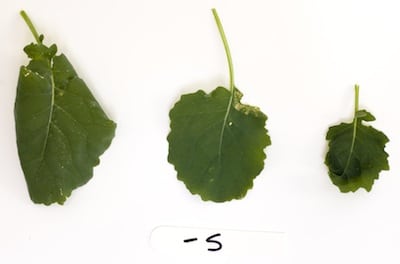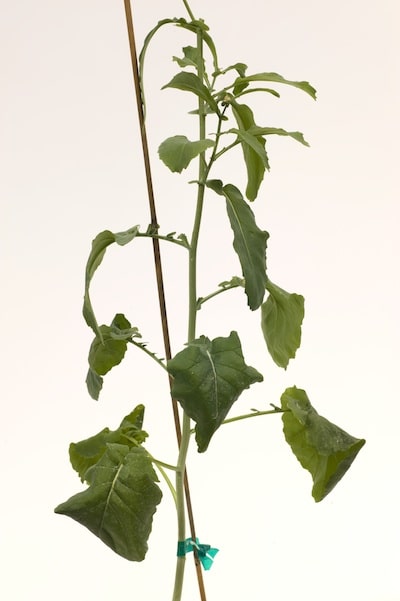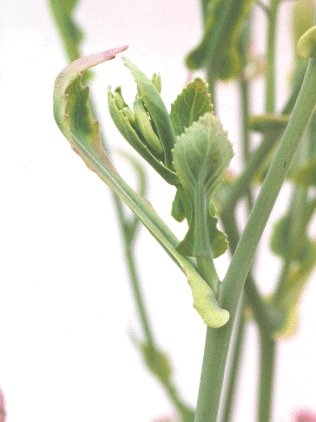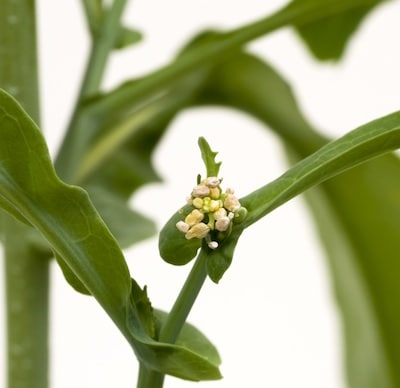



An in crop application of sulphur can make financial sense for canola if:
—Growers could not put the desired rate on at seeding.
—Yield potential improved and growers want to add sulphur to their nitrogen top up. If field conditions have been excessively moist, sulphur may have moved lower in the soil profile. As canola plants grow, their roots will extend into these reserves. For that reason, growers who have been applying recommended rates of sulphur may not see as much economic return from a sulphur top up compared to a grower who has cut sulphur rates in recent years.
—Canola shows signs of sulphur deficiency. With sulphur deficiency, yellowing and leaf cupping tend to occur on new leaves first. Purpling of leaf edges can show up when deficiency is fairly severe. In fields short of sulphur, crops can usually find enough to get past the early rosette stage without visible symptoms. Deficiency symptoms often show up at flowering.
Post-emergence sulphur can be applied up to early flowering and still provide a yield benefit. When doing an in-crop application, growers could target only those areas — such as hill tops — that tend to be sulphur deficient.
Source and rate: Ammonium sulphate (dry) or ammonium thiosulphate (liquid) provides sulphur that is immediately available to the crop. It also provides a nitrogen top up at the same time. As few as 10 to 20 pounds of actual sulphur may be enough to provide an economic benefit, but higher levels may also provide a good return on investment if the soil is very deficient.
Application technique: Application just prior to rainfall is best. Surface applied ammonium sulphate requires rain to move it into the root zone. Sulphur is not volatile like nitrogen fertilizer, so while dry conditions may delay availability to the crop, losses will be minimal if rain is not immediately forecast. Avoid spreading granular product when the leaves are moist from dew to limit sticking of the prills and leaf burn as a result.
If dribble banding liquid ammonium sulphate (8-0-0-9) or ammonium thiosulphate (12-0-0-26), keep in mind that damage from leaf burn tends to be more severe when canola is smaller than the 5-leaf stage. Applying when leaf surfaces are wet can allow liquid to run off and limit this damage.
Applying sulphate fertilizer in a tank mix with herbicide/fungicide may not provide enough sulphur to provide a benefit to the crop. Also, flat fan sprays that cover the leaf are far more toxic to the crop than fertilizer dribbled on the soil surface. Plus, the crop can’t take up much fertilizer through the leaves.
**Links** Include link to Resource article on top dress https://www.canolawatch.org/2011/05/18/top-up-tips-for-nitrogen-and-sulphur/ and to last week’s article about moisture and N loss https://www.canolawatch.org/2012/06/13/n-and-s-lost-with-heavy-rains/
